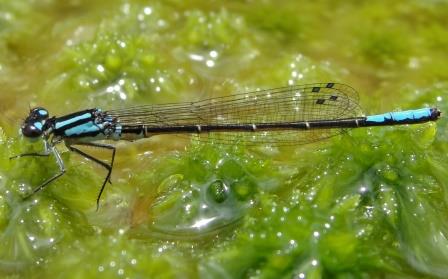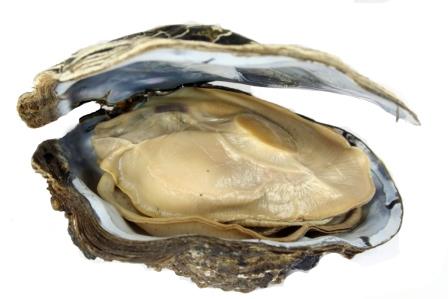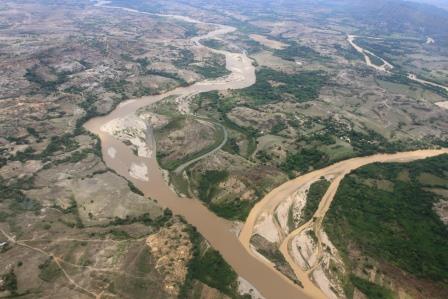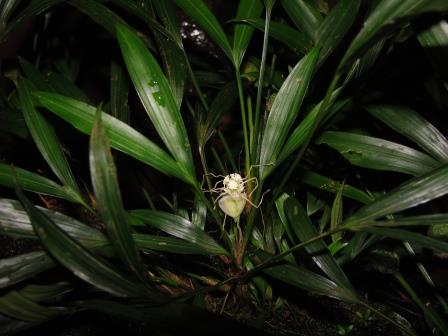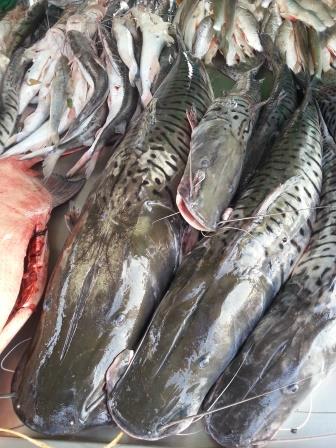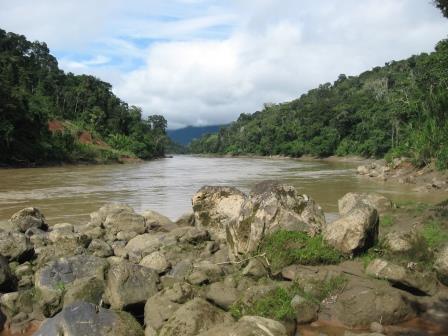Tropical Andes freshwater species at risk – first IUCN Red List assessment
Almost 18% of the freshwater biodiversity endemic to the Tropical Andes region of Bolivia, Perú, Ecuador and Colombia is threatened with extinction on The IUCN Red List of Threatened Species™, according to a recent assessment by the International Union of Conservation of Nature (IUCN) and partners. The analysis of 967 species included freshwater fishes, freshwater molluscs, dragonflies and damselflies and a select group of aquatic plants.
The main threats are agricultural activities, pollution, dams and water management, mining, and unsustainable use of biological resources, such as fisheries and logging. The basins with higher concentrations of threatened species are the Magdalena-Cauca and Dagua in Colombia, followed by the Ucayali, Madre de Dios and Marañón in Perú, Napo, Pastaza and Cayapas in Ecuador, and Beni and Mamoré in Bolivia.
“This project fills an important information gap, as there are no global assessments of freshwater biodiversity in the region,” says Marcelo Tognelli of the IUCN-CI Biodiversity Assessment Unit and project coordinator. “This new data can be used to inform future development in the region where the current pressures on freshwater ecosystems are increasing dramatically and driving species to the verge of extinction.”
Current protected areas do not include many freshwater systems and the project also included the identification of freshwater Key Biodiversity Areas (KBA). Eighty six freshwater KBA were identified, of which 25 were newly delimited. This information will help guide the selection of new protected areas or expansion of existing reserves to include critical freshwater biodiversity.
“We believe that the information and data included in this report, particularly the identification of KBA, will be extremely helpful to guide scientifically sound decision makings on conservation and sustainable management of freshwater biodiversity in the region” says José Álvarez Alonso, of the Dirección General de Diversidad Biológica del Ministerio del Ambiente de Perú and partner of the project.
“This study emphasizes the need to use both terrestrial and freshwater resources in a sustainable manner to avert biodiversity loss and the ecosystem services that they underpin,” says Carlos A. Lasso of the Instituto de Investigación de Recursos Biológicos Alexander von Humboldt de Colombia and co-author of the report. “It is also very timely, as it complements many of the national and regional initiatives that are being developed in the region to conserve freshwater ecosystems.”
The study also included an assessment of the vulnerability of the species to climate change, based on their biological traits. This is the first time that the IUCN climate change vulnerability methods have been applied purely in a freshwater context. Using the most conservative climate change models and scenarios, the results show that approximately 12% of the species assessed would be vulnerable to climate change. In some groups, such as the fishes, greater numbers of climate change vulnerable species are found in lower altitude areas, which was contrary to expectations. This new information highlights the need for monitoring those species that would be more susceptible to changing climatic conditions.
The project was funded by the John D. and Catherine T. MacArthur Foundation, with contributions from Conservation International.
Download the Assessment here: https://portals.iucn.org/library/node/46341
For more information or interviews please contact:
Efrén Icaza, Communications Officer, IUCN Regional Office for South America +593 2 3330 684, email efren.icaza@iucn.org
Lynne Labanne, IUCN Global Species Programme, IUCN, m +41 79 527 7221, e-mail lynne.labanne@iucn.org
